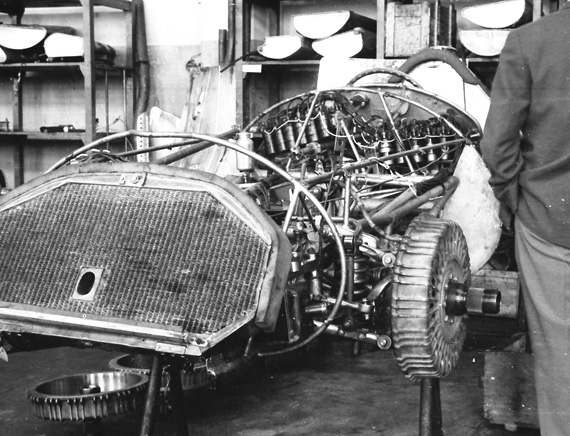
Been there and done that. Upon seeing the Schlumpf V12 250F at Avignon, our weathered correspondent pulls out a photo he took of the 250F V12 when new for comparison's sake. And note that line up of coils -shocking to say the least!
Story and photos by Graham Gauld
Just over a month ago, I was at Retromobile in Paris and a friend of mine suggested I try similar thing, the Avignon Motor Festival in that well-known city famous for its bridge. So last Friday we drove to Avignon to take a look.
Here again was a huge display in the new Parc Expo outside the city covering around seven different pavilions each with their own speciality. I avoided two of them (respectively on tractors and agricultural machinery) and concentrated on the main show area where they were featuring Maserati. I must say, I was impressed at Maseratis of all shapes and sizes the organisers had collected, as well as a patchwork quilt of French and Italian marques dotted all over the place. I felt for this story we should concentrate on pictures of some of the lesser known cars as well as the usual suspects.
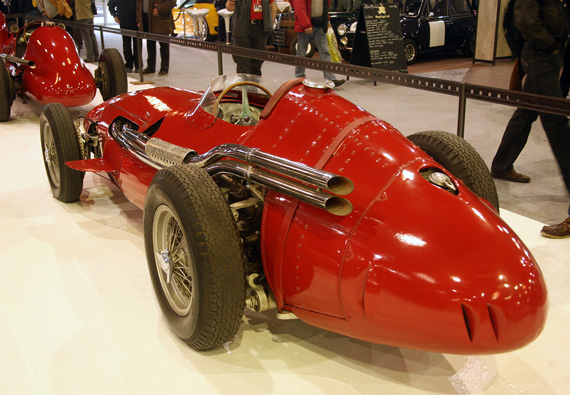
The Schlumpf Maserati 250F on show at Avignon, chassis 2523 used as the mule for the original 1957 V12.
For example, the legendary Schlumpf Collection sent a batch of cars that included what was described as the original V12 Maserati 250F from 1957. I cannot confirm this as I am sure if I had climbed the barrier and lifted the hood I would have been thrown out of the place. Here is a photograph of the car today – it was later refitted with a 6 cylinder engine. However, I have also added a photo I took of the prototype 250F (2523) in the factory in 1957 and showing the car with its engine removed. It reveals the incredible group of 24 coils in two banks of 12 mounted on the bulkhead. It was an engine that produced 50 bhp more than the existing 6 cylinder but proved to be evil in the manner in which it launched its full power, often at the time the driver didn’t want it.
I always thought that Frua should be better known and this view was emphasized by the Frua-bodied A6G 54 Spyder that the organisers had borrowed from a French Museum. The Frua cars came late on in the series and this one was chassis 2191 that appeared at the 1957 Geneva Motor Show. There were about ten or twelve spyders with Frua coachwork built and to me it is difficult to believe that it was designed fifty seven years ago.
There was so much to see that it was difficult to select cars and items to write about. For example in one of the other buildings I found this beautiful recreation 650cc Abarth engine claiming 50 bhp which at $7300, would fit nicely in that old Fiat 500 you have in the barn.
Then there was the interesting black OSCA 1600 GT. At first glance I thought I had found one of the rare Boneschi coachbuilt versions but in fact it was an equally rare 1600GT with coachwork by Touring of Milan. Right next door was this Fiat 1500 OSCA, a collaboration between Fiat and OSCA during the 1960s and again hard to find these days.
Amongst the many French specials there was a beautifully restored one-off with coachwork by Jean Baron in Tournan in France called the Giai Special. It was built in 1945 shortly after World War II ended by Philippe Giai using a 1939 1100cc Peugeot 202 as the base. What makes this car different is the coachbuilt bodywork now finished in dark blue, but earlier believed to have been pale blue, the French racing colors.
Another car that caught my eye was one of the Matra-built Simca 1200S built coupes with coachwork by Bertone. This model was built during Simca’s Chrysler-owned period and was an effort to boost sales with a small sporty coupe that had the original Simca 1100cc motor boosted to 1204cc and 82 bhp. It didn’t really help much and perhaps was not one of Bertone’s best designs but brought in some cash.
As with all shows like this you come upon the really odd ones. On one stand was an impressive looking unpainted Maserati A6GCS with a nice shiny engine installed. I talked to the guy on the stand and he explained that it had come as a wreck and was being rebuilt. I asked where the familiar Maserati chassis plate had gone and he smiled, shrugged his shoulders and said “well…..the wreckage came from South America”. You can learn a lot from a smile.
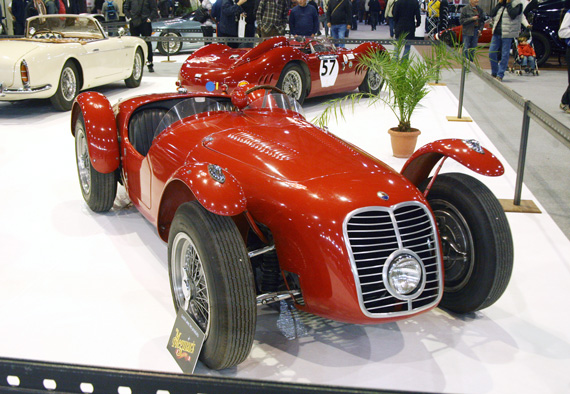
I could not resist photographing one of the early Maserati A6GCS 'Monofaro's'. It was given the name thanks to the single headlight in the grille.
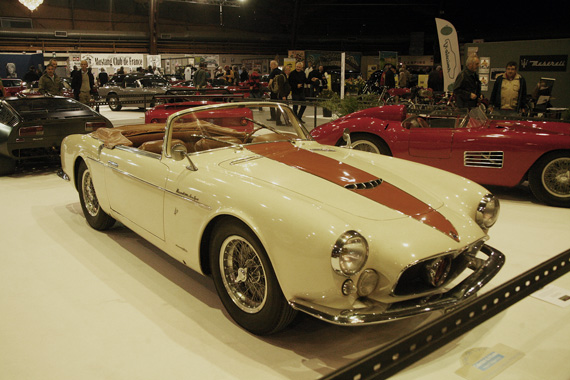
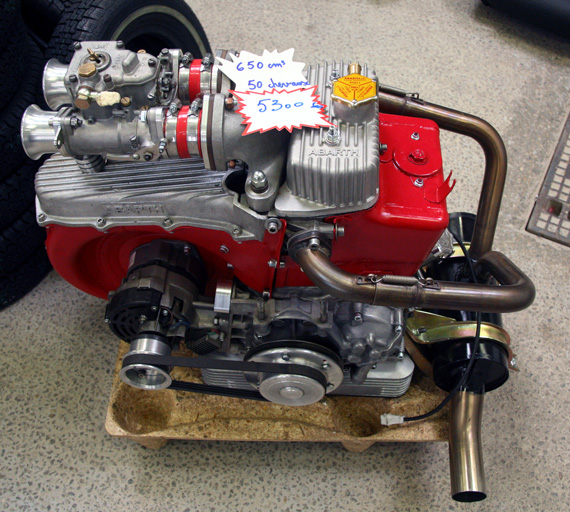
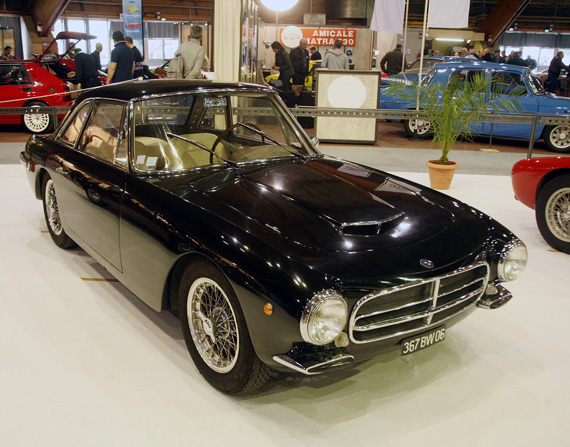
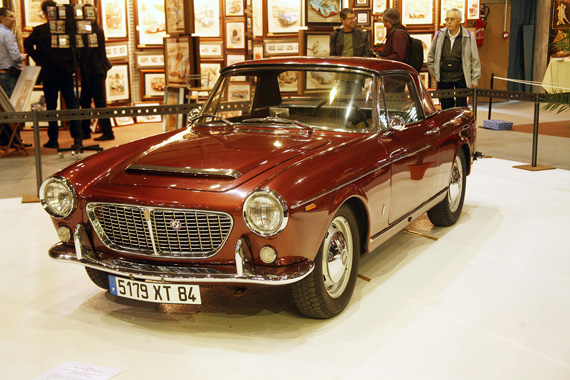
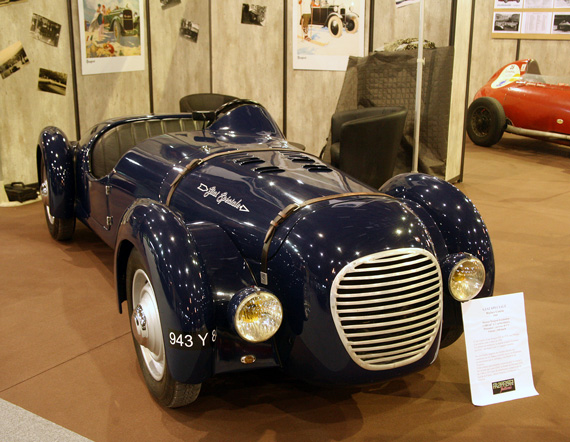
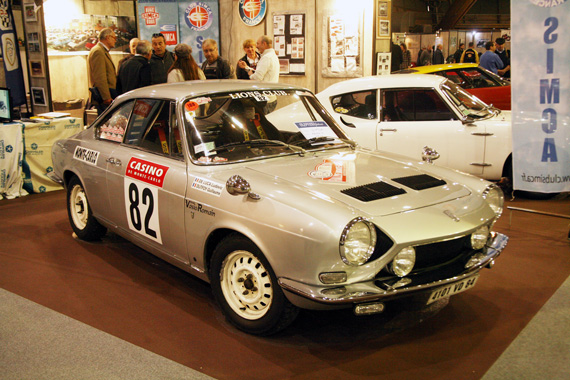
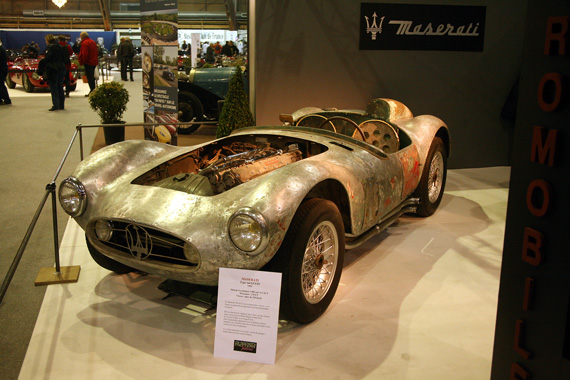
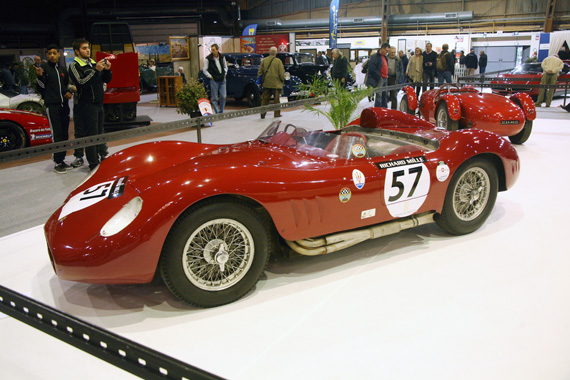
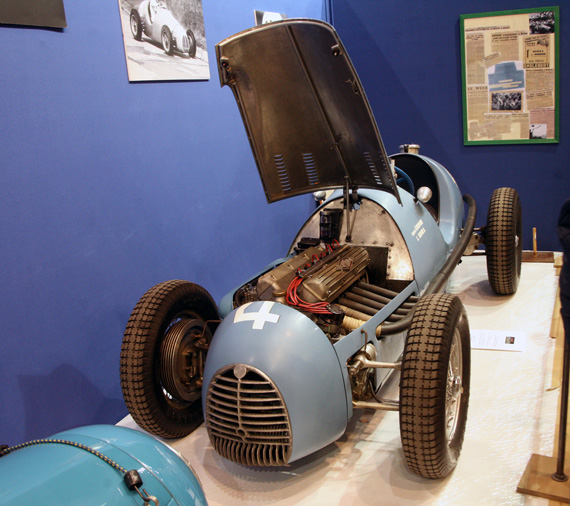
When I moved from England to Australia ten years ago, my (Australian) wife asked me what I would miss most about England.
Stuck for anything English of note, I replied “France!”
We had always been used to the fact that it was only a couple of hours drive away, and unless I was in a hurry to get somewhere (rarely) I made a point of always taking a different route to wherever we were headed.
A favorite destination was the area around Avignon and Graham’s report served to remind me how fast ten years can pass.
By the way, the bridge that Avignon is famous for is in fact only half a bridge, but if that is architecturally underwhelming, the spectacular Pont du Gard is only a short drive away. Much more impressive.
As for the cars, I agree with Graham’s assertion that Frua deserves more recognition. While Bertone and Pininfarina are household names, and Ghia, Touring, Vignale and Zagato well known too, I have always found Frua’s designs quietly elegant without having to resort to outrageous show cars for attention. Maybe, I just answered my own query, that is why they get less attention today?
The Giai Special is an interesting find; if Graham has a contact there could be another obscurity suitable for a story on VT.
Likewise the Robert Manzon story?
“Mon ami” Graham Gauld does it again! Those 24 coils in the V12 250F Maser were at least hidden. Remember the later Cooper-Maserati F1 car on which they were not? I guess you could explain that away by believing that coils get hot and don’t like it, so being in the cool air flow, and thus visible, is justification enough for their exposure. Not so crazy, perhaps, when you think that today’s coils are often combined with the plug cap. One coil per cylinder just like the Maserati.
From Graham:
You are quite right about the bridge and the area and would have explained but did n’t want to write a travelogue. Reference future stories I am happy to say Robert Manzon is still as cheerful as usual and I meet up with him from time to time thanks to the Grand Prix Drivers Club meetings. Obviously he has difficulty getting about but we’ll see what can be done.